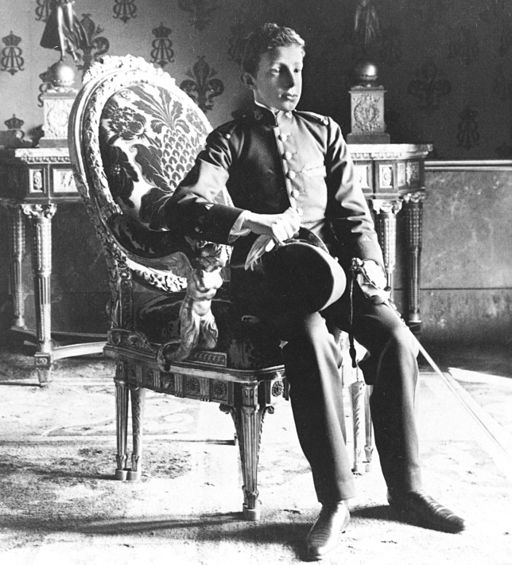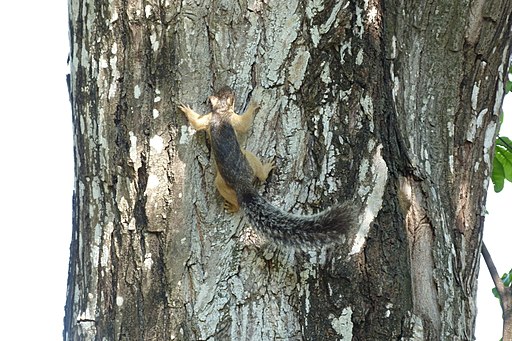Did you know that August 22nd (and February 28) is National Tooth Fairy Day? In honor of this fun holiday I am sharing some fun facts about the mysterious Tooth Fairy. No one knows what the Tooth Fairy looks like, but often the Tooth Fairy is betrayed as a female with wings.
The Tooth Fairy teaches kids about a few things. Many parents are using the Tooth Fairy to teach about good oral hygiene (the Tooth Fairy pays more for healthy, clean teeth).The Tooth Fairy also teaches a lesson about our economy--trading the tooth for money or a prize. Here are some fun facts about the Tooth Fairy.
The Tooth Fairy teaches kids about a few things. Many parents are using the Tooth Fairy to teach about good oral hygiene (the Tooth Fairy pays more for healthy, clean teeth).The Tooth Fairy also teaches a lesson about our economy--trading the tooth for money or a prize. Here are some fun facts about the Tooth Fairy.
Fun Facts about the Tooth Fairy
- The earliest known reference to the tooth fairy was in the Chicago Daily Tribune in a “Household Hints” column in September 1908. Reader Lillian Brown wrote in to suggest that "Many a refractory child will allow a loose tooth to be removed if he knows about the tooth fairy. If he takes his little tooth and puts it under the pillow when he goes to bed the tooth fairy will come in the night and take it away, and in its place will leave some little gift."
- In 1927 Esther Watkins Arnold popularized the idea with her play for children called, The Tooth Fairy.
- The idea of the Tooth Fairy did not really take off in the US until after World War II.
- The first time the Tooth Fairy was in the World Book Encyclopedia was in 1979.
- The average American tooth is worth around $4.13. The first lost tooth gets an average of $5.72. These are lower than what was paid in 2016. In 2017 the Tooth Fairy gave out a total of $271 million in America. Since 1998 the Tooth Fairy payments have correlated to the movement of the S&P 500 in 12 out of the last 14 years. Thus far 2016 was the highest payout year.
- The highest Tooth Fairy payout in the US is in the West ($4.85), followed by the Northeast ($4.35), then the South ($4.12) and finally the Midwest ($3.44). The Tooth Fairy leaves money at 95% of the households visited. At 47% of the households a small toy or game is left, at 35% a letter from the Tooth Fairy and at 31% a toothbrush is left in addition to or instead of money.
- A survey by Dr. Rosemary Wells (Tooth Fairy Expert) in 1984 says that 74% of Americans view the Tooth Fairy as female and 12% didn’t view the Tooth Fairy as male or female.
- There was a Tooth Fairy Museum in Deerfield, Illinois run by Dr. Wells. It was open in 1993 and closed when Dr. Wells died in 2000.
- The Tooth Fairy visits 84% of houses in the US.
- 55% of parents admitted to forgetting to have the Tooth Fairy come at least once. I know I have; have you?
Tooth Traditions from Around the World
What do kids around the world do when a tooth falls out? It is not always the Tooth Fairy who comes if anyone does. It can be a mouse, a squirrel, a bird and more!
- In Argentina and Sweden, children leave their teeth in a glass of water. A Magical Mouse comes and takes the tooth and a drink of water and leaves the children a little money.
- In many European countries the kids leave their teeth under the pillow but and elf or brownie trades the tooth for a treasure.
- In the Philippines kids leave their teeth on the windowsill and the Tooth Rat trades the tooth for a treasure.
- In Colombia and South Africa kids leave their tooth under their pillow or in a slipper and a little mouse comes for the exchange.
- In Chile and Costa Rica, kids give their teeth to the mothers who make charms out of them and give them back to the kids.
- In the 13th century Islamic scholar Ibn Abi el-Hadid referenced the tradition of throwing the baby tooth to the sun or into the sky and praying for a better one. Throwing teeth is a tradition in Egypt, Jordan, and Iraq. In Greece the children throw their baby teeth onto the roof. In Japan, India and Korea lower teeth are thrown upward and upper teeth are thrown to the floor. I also read that in Korea kids throw their teeth onto the roof in hopes of a blackbird bringing them a new tooth.
- In Lithuania, kids keep their teeth. They often have a special box to keep them.
- In Nigeria kids play a game with stones when they lose a tooth. Boys play with 8 stones and girls with 6.
- Norwegian and Finnish children are warned that the tooth
troll, Hammaspeikko, comes for kids who do not brush their teeth. There is
reference in the Norse Eddas, myths,
verses, and poetry from the 13th century of payment from parent to
child for the opposite of when an infant’s first tooth came in. There is even a
myth that Alfheim, the fairy world, was given to their king, Frey as a tooth
gift in his youth. It is believed that some Vikings warriors would wear their
children’s teeth as talismans. - The Spanish El Ratoncito Perez was created by author, Luis Coloma, for King Alfonso XIII in the 19th century. El Ratoncito Perez is recognized as the real Tooth Fairy today in many Spanish speaking countries.
- In El Salvador the kids wait for a tooth rabbit. In Sri Lanka the kids go outside their house and close their eyes and say, “Squirrel, Squirrel, take this tooth and give me a new one.” They throw it on the roof and go back inside and open their eyes.
- In Indonesia kids throw their tooth backwards over their shoulder and over the roof of the house. If they throw them straight their permanent tooth will grow straight.
- In Jamaica a calf comes to take the tooth away. To keep the calf at bay the kids put the lost tooth in a tin can and shake it. The noise scares the calf away. There was also a comment on the source post that said they actually throw it on the roof and ask rata rata rat to replace it.
- In Shuswap and Youpik Nations, the teeth are fed to an animal such as a dog and ask the animal to bring them a new tooth to in place of the old one. The parents of kids in Chippewa Nation use charcoal to turn the lost tooth black and then throw it to the west. Cherokee Nation children run around the house with the lost tooth and then throw it on the roof while reciting “Beaver, put a new tooth in my jaw!” four times. Navajo kids take their tooth to the southeast and bury the tooth on the east side of a sagebrush, pinyon tree or rabbitbrush. The Teton kids bury their tooth in the dirt at the entrance to the lodge. The Dene Yellowknives have their mothers or grandmothers put the lost tooth in a tree and their family dance around the tree.
- In Brazil kids toss their teeth out the window in hopes of having a bird pick it up. The bird only picks up clean teeth and then leaves a gift or coin for the tooth.
- In France and Belgium the kids leave morsels of cheese with their teeth for the Tooth Mouse. Morocco and Switzerland also believe in the Little Mouse. One 19th century French tradition has the Virgin Mary exchanging teeth for coins or gifts under the pillow.
- One Italian tradition says it is Befana (the Italian Santa Claus) who also collects the teeth and leaves coins.
- In Turkey kids bury their teeth. They are taught that where they bury them matters. If the tooth is buried near a doctor’s office they will grow up to be a doctor. A comment on the source post says this is actual more true for umbilical cords and for teeth they throw them on the roof.
- In Ukraine the kids wrap their tooth in a cloth and leave it in the darkest corner of the house. They whisper for a new one to grow in and the tooth is left there until the new one grows in.
- In Pakistan kids wrap their teeth in a cloth and then throw it into a river. This is considered good luck.
- In Afghanistan kids throw their teeth into mouse or rat holes.
 |
| King Alfonso XIII By Underwood & Underwood - New York (Library of Congress) [Public domain], via Wikimedia Commons |
 |
| Varigated Squirrel By Donald Hobern from Copenhagen, Denmark (Sciurus variegatoides) [CC BY 2.0 ], via Wikimedia Commons |
Tooth Fairy Craft and Book Round-Up
Here are some resources and ideas to celebrate National Tooth Fairy Day!
1) Tooth Fairy Printable Pack from 123 Homeschool 4 Me
2) Tooth Fairy Exchange Idea from Arts & Crackers
3) Legend of the Tooth Pirate from Happy Strong Home
4) How to Make a Tooth Fairy Box from Red Ted Art
5) Our review of How to Trick the Tooth Fairy
6) Felt Tooth Fairy Pillow from Buggy and Buddy
7) Our review of Give Us a Smile, Cinderella
8) Tooth 3-Part Cards from In Our Pond
1) Tooth Fairy Printable Pack from 123 Homeschool 4 Me
2) Tooth Fairy Exchange Idea from Arts & Crackers
3) Legend of the Tooth Pirate from Happy Strong Home
4) How to Make a Tooth Fairy Box from Red Ted Art
5) Our review of How to Trick the Tooth Fairy
6) Felt Tooth Fairy Pillow from Buggy and Buddy
7) Our review of Give Us a Smile, Cinderella
8) Tooth 3-Part Cards from In Our Pond
Sources:
- Arizona Family Dental. International Tooth Fairy Tales: Lost Tooth Myths from Around the World. (27 Feb 2017) https://www.arizonafamilydental.com/blog/lost-tooth-myths-around-world/
- Borden, Jim. “Fun Facts about the Tooth Fairy I Bet You Didn’t Know Existed and a Classic Tooth Fairy Tale.” (25 Feb 2017) https://www.jborden.com/fun-facts-about-the-tooth-fairy-i-bet-you-didnt-know-existed-and-a-classic-tooth-fairy-tale/
- Delta Dental. The Original Tooth Fairy Poll Home Page 17 Aug 2018 http://www.theoriginaltoothfairypoll.com/the-original-poll/
- Delta Dental. “Fairy Tales.” 17 Aug 2018 http://www.theoriginaltoothfairypoll.com/fairy-tales/
- Delta Dental. “Tooth Fairy Payouts: Hit Hard Times.” (26 Feb 2018) http://www.theoriginaltoothfairypoll.com/news-release-parent/ on 17 Aug 2018
- Jaholst. Enchanted America. “The Tooth Fairy Museum, Deerfield, IL.” (10 Jun 2014) https://enchantedamerica.wordpress.com/2014/06/10/the-tooth-fairy-museum-deerfield-il/
- Kilgrove, Kristina. Forbes. “Where Did the Tooth Fairy Come From?” (14 Sep 2016) https://www.forbes.com/sites/kristinakillgrove/2016/09/14/where-did-the-tooth-fairy-come-from/#fb911cb59d40
- Tom at Oral Answers. “Tooth Traditions from Around the World. It’s Not Just the Tooth Fairy!” (5 Aug 2011) https://www.oralanswers.com/tooth-traditions-world/
- VioLife. “Fun Facts about the Tooth Fairy.” (26 Jun 2017) https://blog.violife.com/fun-facts-tooth-fairy/
- Williams, Garth. Mental Floss. “13 Toothy Facts About the Tooth Fairy.” (22 Aug 2016) http://mentalfloss.com/article/84393/13-toothy-facts-about-tooth-fairy







